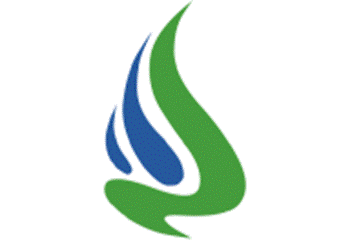
Rapid Access Skin Cancer Screening, Surgery, Mole Checks & Mapping

Mole Map Clinic
Call us:
0830406573 0838655526


State-of-the-art Automated Total Body Mapping:
This sophisticated software is designed to detect abnormal moles accurately when carried out periodically at regular intervals.
Atypical Moles (or Naevi) may occur anywhere on the body, are often larger than other moles, have an odd shape and have more than one colour.

Mole Mapping: When combined with clinical examination, it detects skin cancer early and avoids unnecessary scars. For further information, please discuss with your dermatologist.
Commonly Asked Questions Regarding Mole Mapping:
Do I need a referral for mole mapping?
You do not need a referral if you want to have mole mapping carried out.
What happens if one of my mole have showed significant changes after mole mapping?
Your dermatologist will have a discussion about the next recommended step which would be to have it excised (removed surgically).
How long does it take to get mole mapping done?
A typical mole mapping for the whole body will take approximately 30-40 minutes.
How soon should I hear about the outcome after my mole mapping?
You will be informed within a week by our clinical nurse specialist if there are any concerns or further steps required after your mole mapping has been carried out.
What is the cost for a face-to-face, skin check consultation ?
The cost for a skin check will depend on whether the examination is carried out on a total body OR a body specific area.
Please enquire with our team for more information.
I do not have health insurance, but I am worried about my moles. What should I do?
We aim to review all patients with urgent medical concerns with top priority regardless of whether they have health insurance or not. We encourage you to call us to follow-up on your urgent appointment request if you have not heard from us within 2 weeks from your referral.
Is Mole Mapping similar to face-to-face consultation?
Mole mapping is a service to screen for abnormal moles, carried out by a highly trained dermatology clinical nurse specialist. However, a review by a consultant dermatologist will also be part of this service if there are any concerns in any of your moles from initial screening.
It is recommended that your moles are mapped regularly to ensure that there are no changes in them. This allows early skin cancer detection.
How often should I have my moles mapped?
The frequency of your mole mapping will depend on your risk factors, and especially if you had melanoma previously or not. It is highly recommended to have your mole regularly mapped for the best outcome and prevention. Please speak to our staff for more information.

Diagnostics and Treatment of Skin Cancers (Basal cell carcinoma, Squamous cell carcinoma, Melanoma)
'Skin cancer is the most common cancer in Ireland, with over 13,000 new cases diagnosed every year. The National Cancer Registry of Ireland (NCRI) expects this number to double by 2040. Majority of cases are caused by UV rays from the sun or sunbeds.' For the best outcome, patients with skin cancer are best co-managed by dermatologists, plastic surgeons, oncologists and occasionally GPs with an interest in this area.


Melanoma & Skin Cancer Awareness
SERVICE PROVIDERS:
-
Consultant Dermatologist.
-
Plastic Surgeons and other skin cancer specialist where required.
-
GP with SI in skin cancer medicine.
-
Skin cancer Clinical Nurse Specialist.
AIMS:
-
Health promotion to create awareness about skin cancer prevention.
-
Identify at risk individuals who will benefit from education and risk modification to prevent skin cancer.
-
Prevent onset of skin cancer with regular assessments and treatment of pre-cancerous lesions.
-
Identify patients with early disease / pre-cancerous lesions, prevent disease progression by recommending early tests and treatment where necessary.
-
Reduce morbidity and mortality in patients with established disease and subsequently enroll them into surveillance program for regular checks to prevent recurrence or further development of new malignancies on other sites.
HIGH RISK POPULATION:
-
People with fair complexion, blond or red hair, blue eyes and freckles.
-
People with certain type OR large number of moles.
-
Personal OR family history of skin cancer.
-
People with suppressed immune system from medication (eg: organ transplant)
-
People with certain genetic disorders that are more prone to skin cancers.
-
Elderly population.
-
People with chronic sun exposure / frequent blistering sunburns (outdoor workers, recreational exposure)

NODULAR MELANOMA

BASAL CELL CARCINOMA

DYSPLASTIC NAEVUS

ACRAL MELANOMA

MELANOMA

MELANOMA OF THE NAIL UNIT

'Skin cancer detection could be missed in 4% of patients, 0.6% with potentially lethal skin malignancies WITHOUT a complete skin examination'
BJD 2011
'A study on melanoma-specific cohort showed that patients are more likely to have non-invasive tumours detected on visible body sites but more advanced disease on non-visible body sites. Furthermore, lethal skin cancers may have been missed in 28% of cases if total body skin examination was not carried out.' BJD 2023
Make your appointment for a skin examination today!
'Skin cancer is the most common cancer in Ireland, with over 13,000 new cases diagnosed every year. The National Cancer Registry of Ireland (NCRI) expects this number to double by 2040. Majority of cases are caused by UV rays from the sun or sunbeds.' For the best outcome, patients with skin cancer are best co-managed by dermatologists, plastic surgeons, oncologists and occasionally GPs with an interest in this area.










